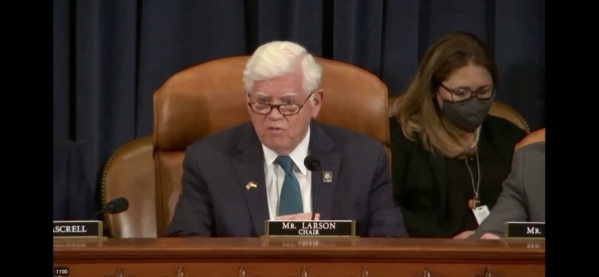
Witness after witness at Tuesday’s Congressional hearing on Social Security Administration (SSA) customer service testified that the agency is in dire need of additional resources in order to properly serve the public. The hearing was held by the House Ways and Means Social Security subcommittee, chaired by Rep. John Larson (D-CT), with testimony from a variety of witnesses from SSA and advocacy groups. While witnesses praised SSA employees for doing their best to provide the public with customer service during the pandemic, they painted a picture of an underfunded and overworked agency in desperate need of Congressional action.
“The Agency and its employees have done an extraordinary job of making the most effective use of the dollars they have been appropriated. But backlogs that pre-existed the pandemic have grown exponentially, staff levels have dropped precipitously, and the Agency will need the strong support of Congress if it is to continue fulfilling its mission to your constituents,” urged Max Richtman, President and CEO of the National Committee to Preserve Social Security and Medicare, in a written statement to the subcommittee.
Rebecca Vallas of the Century Foundation advocacy group told lawmakers at the hearing, “A decade-plus history of congress underfunding SSA’s already incredibly lean operating budget, worsened by the pandemic, has spurred several urgent crises in the agency’s customer service…The casualties are your constituents.”
Among the most pressing problems that have plagued SSA customer service are long hold times, disconnects, and busy signals on the agency’s toll-free phone line and excessive delays in Social Security Disability Insurance (SSDI) hearings. (Over 100,000 claimants have died waiting for their cases to be adjudicated.). In April, SSA was able to re-open most of its field offices after being shuttered for almost two years during the COVID pandemic.
SSA Deputy Commissioner for Operations, Grace Kim, credited managers, employees, labor unions, and advocates for the agency’s “ability to transition from remote work to walk-in service.” The field office re-openings went more smoothly than many advocates expected, but the agency must now contend with a huge backlog of work with inadequate resources.
“We are doing what we can with current staff and funding. The demand for service is high; we are losing staff; and morale is low,” testified Peggy Murphy, Director of the Social Security field office in Great Falls, Montana. “SSA is at a critical juncture as we face the future.”
Chairman Larson blamed SSA’s problems on budget cuts that Congress began imposing in 2010, pointing out that the agency’s operating funds have shrunk by 14% since then (adjusted for inflation), at the same time as demand for its services has skyrocketed as waves of Baby Boomers retire (at the rate of 10,000 every day).
Those budget cuts have forced SSA to lay off workers or allow vacant positions to remain unfilled, said Chairman Larson. “SSA has the lowest number of workers in 25 years despite almost double the number of beneficiaries.”
The Chairman pointed out that most of SSA’s operating budget is funded by payroll contributions from American workers “with each and every paycheck,” and that it is unjust for Congress to suppress funding for the agency that administers workers’ earned benefits.
Several witnesses voiced support for Chairman Larson’s Social Security 2100: A Sacred Trust legislation that would safeguard SSA customer service, including:
*A provision to prevent field office closures unless certain requirements are met.
*A provision to clarify that Congress did indeed intend for annual Social Security Statements to be mailed to workers age 25 and older so that they can plan for their financial security
The National Committee to Preserve Social Security and Medicare has enthusiastically endorsed Chairman Larson’s bill, which also boosts Social Security benefits across the board and extends the solvency of the program’s trust fund. Chairman Larson says that the bill will be marked-up in committee later in May or early June. The legislation has over 200 cosponsors in the House.
While the Social Security 2100 bill would improve SSA customer service, witnesses said that Congress must provide more robust funding for the struggling agency. “Our FY2022 appropriation is insufficient to provide the level of service your constituents expect and deserve,” said SSA’s Grace Kim.
The National Committee to Preserve Social Security and Medicare urges lawmakers to boost SSA funding to $15.55 billion for FY 2023, which is the amount submitted by the Agency itself to the Office of Management and Budget (OMB).
“Adequate funding for SSA is vitally important to your constituents and to our millions of members and supporters across the country who either are receiving Social Security or expect to do so in the future,” wrote Max Richtman in his statement to the subcommittee, “both to ensure that they receive the benefits they have earned and to maintain the public’s strong support for this essential program.”


